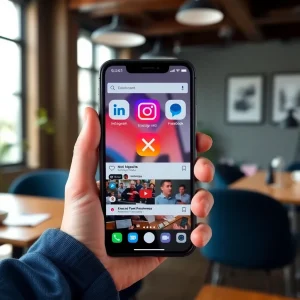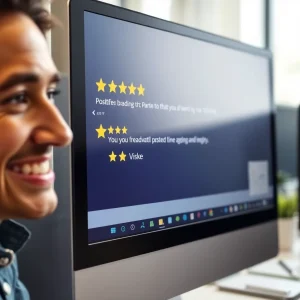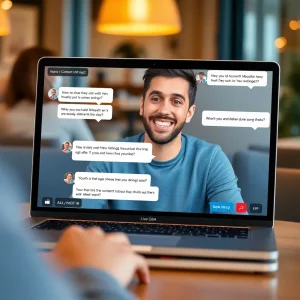7 Simple Ways to Build Authority Without a Website
Even If You’re Starting from Zero

You don’t need a fancy domain, hosting, or a full site to begin building credibility, influence, and trust online. In fact, many people establish strong reputations even before launching a website. Because your goal is Internet Profit Success, you can start using low-barrier moves that don’t require web dev skills or big budgets. The seven practical tactics below will help you build authority without a website. I’ll also weave in related phrases like “how to build authority online without website” and “establish credibility without owning a site.”
Why Build Authority Without a Website (Especially Early On)
Many aspiring creators assume a website must come first. Yet you can gain traction and trust before investing in domains and design. As you demonstrate expertise, people begin to trust your content, follow your work, and even refer others to you. Over time, that trust converts into paying clients or customers. In short, credibility is currency in the world of Internet Profit Success.
Moreover, lots of authority signals (mentions, guest posts, social proof) don’t originate from your own domain, they come from external platforms. Thus, you can start accumulating those signals now. Later, if you decide to spin up a website, you’ll already have audience, content, and reputation to plug in. In effect, building authority without a website gives you a head start.

1.Show Up Consistently on One Social Platform
First, choose a platform where your ideal audience already spends time. For instance, if you target professionals or B2B clients, LinkedIn is a strong option. On the other hand, visual niches may fare better on Instagram or TikTok. Meanwhile, quick interaction and commentary may shine on X (formerly Twitter). Whatever your niche, prioritize one channel instead of scattering effort everywhere.
Once you pick one, post value regularly, aim for two quality pieces per week. Simultaneously, engage with others: comment, reply, message people in your niche. Over time, consistency helps people recognize your name and associate it with useful content.
Here’s a simple plan:
Draft a four-week content calendar for your chosen platform.
Use ChatGPT (or similar) to brainstorm 10 short posts that solve beginner problems in your niche.
Each day, comment on or message at least five relevant people.
Pin or “feature” one of your best posts to act as a mini landing page in that platform.
For example, a coach who posted bite-sized productivity tips weekly on LinkedIn eventually received speaking invites, podcast appearances, and DMs about paid work. In that scenario, she effectively built authority without a website by showing up consistently.
2.Publish in Guest Spaces or Community Groups
Next, expand your presence by publishing where your ideal audience already hangs out. Many platforms allow contributors (Medium, Substack, niche newsletters), and dozens of communities welcome quality content.
By appearing in respected spaces, you piggyback on their audience and cred. This tactic plays directly into how to build authority online without website, because each external appearance is a credibility signal.
To take action:
Research five publications or blogs in your niche that accept guest articles.
Pitch brief topics (tie them to audience problems).
Join two active niche communities (Facebook groups, Slack, Discord).
Post value (no sales pitch) at least twice per week in those groups.
Collect your best posts, later repurpose them for social platforms.
As an illustration, a freelancer shared design tips in a Slack group. Within weeks she was being invited to beta test new tools and gain exposure through the community. By contributing regularly, she began to establish credibility without owning a site.
Make sure every guest post or community contribution includes a short “about me” with a link to your main social profile. That way, people reading your work can follow you.

3.Collect and Show Testimonials and Results
Proof is a powerful trust builder. Even if your wins are small, showcasing them helps others believe in your expertise. You can gather:
Screenshots of work or results (with permission)
Quotes or feedback from people you helped
Short, mini case studies showing “before → after”
Then, display these in your profile, pinned posts, or feature them in your content.
Here’s how to do it:
After helping someone, ask, “Could you send me a one-sentence note about what changed for you?”
Once you receive it, screenshot or copy it into a “testimonial bank.”
Monthly, update your top posts or pinned content to include fresh wins.
Use anonymization if needed or ask permission to use names.
One example: a consultant posted a quote about improving a client’s workflow. The social proof led to stronger trust from new followers and more DMs inquiring about her services.
Although you don’t yet have a website, these testimonials make you look more credible, giving people confidence to engage with you.

4.Host Small Q&A Sessions or Live Events
Live interactions transform you from a voice behind the screen into a real human. They show you know your stuff and that you care about solving people’s problems. Plus, live events offer a direct way to engage.
You can use Instagram Live, LinkedIn Live, Clubhouse-style rooms, Spaces, or Zoom workshops. Invite viewers to ask questions. Use a poll or ask followers to send questions ahead of time. Afterward, repackage key insights into posts or clips.
To implement:
Schedule a 20-minute Q&A within the next two weeks.
Promote it days in advance and ask people to submit questions.
Run the session. Then, extract 2–3 short video or text clips.
Post those clips (or threads) later across your social presence.
For instance, a social media strategist hosted a LinkedIn Live covering headline writing. She received DMs from multiple participants, many of which turned into consulting conversations.
You might also host an AMA (ask-me-anything) inside a niche Slack or Discord group. Doing so helps you become visible inside that community, reinforcing authority.

5.Create a Free Resource You Can Share
Providing something tangible, even without a website, shows you have substance. It could be a checklist, template, mini guide, swipe file, or anything your audience finds useful. Host it on Google Docs, Notion, Gumroad (free version), or even shared via a simple file link.
Once you’ve created it, you can share it widely:
Add the link to your social bio
Include it in live sessions or Q&As
Mention it in community posts
Encourage people to access and share
Here’s how:
Pick one small resource idea (e.g. content calendar template, keyword checklist).
Draft it using ChatGPT (structure, copy, design).
Publish a shareable link.
Seek feedback or ask users to send short takeaways (and turn those into mini testimonials).
An example: a copywriter built a “one-page email subject line swipe file” in Notion. She shared it widely and it got passed around. That led to greater reach, credibility, and incoming leads, all without a website.
To maintain freshness, update the resource periodically (new examples, improvements) and let people know when it’s refreshed.

6.Collaborate With Other Creators or Beginner Partners
Working with others helps both parties expand reach. Collaboration can take many forms, joint live sessions, content swaps, newsletter features, guest posts, or co-hosted workshops. When each person brings their own audience, you double your exposure.
To get started:
Make a short list of 3–5 creators in your niche (or adjacent).
Reach out with a simple idea (“Let’s co-host a Live,” “Swap value posts,” “Do a joint Q&A”).
Deliver value to their audience, then cross-promote.
Tag each other, share behind-the-scenes, and encourage both sets of followers to connect.
One team of fitness trainers co-hosted an Instagram Live on quick workouts. Each gained 50+ followers and DMs from new prospects after the session. Collaboration helped them establish presence faster than working solo.
Another tactic: reverse guesting. You host someone in your space, and they host you. That way, both audiences see you, reinforcing your authority in multiple circles.

7.Share Your Learning Journey Openly
People love following a process, especially when it includes real lessons, failures, and breakthroughs. By sharing your experiments, along with wins and mistakes, you become more relatable and trustworthy. That kind of raw, honest content strengthens your brand and helps people root for you.
To do this:
Decide on a format (weekly update, short video, thread, or narrative post).
After each experiment, write down what you did, what worked, what failed, and what you’ll try next.
Share that publicly. Invite feedback, suggestions, or questions.
A marketer once ran weekly ad tests and shared results: what went wrong, what changed, what improved. Her audience loved the transparency and began following her experiments as a series. Over time, that consistency and honesty helped her build authority without a website.
Because these posts often become reference content, people will return to them, share them, or cite them, which boosts your reputation further.

Extra Visibility & SEO Hacks (Even Without Your Own Site)
Although you don’t yet have a domain, you can still use some visibility strategies to amplify your presence.
Parasite Publishing
Publish on high-authority domains (Medium, Substack, guest sites). Because those domains already rank, your content has a higher chance of being seen. Using this method is one of the more effective ways to build authority without a website.
Keyword-Optimized Guest & Social Content
Whenever you publish on Medium, LinkedIn, or in communities, treat each piece like a blog post. Include your main keyword phrase (“build authority without a website”) and related keywords (“how to build authority online without website”, “establish credibility without owning a site”) in headlines, subtitles, and early paragraphs. That increases your chances of ranking in search engines, despite not owning your own site.
Topical Authority & Content Clusters
Even without your own domain, you can build topical authority by frequently covering related subtopics. In your posts and content contributions, consistently reference themes like authority building, credibility, trust signals, reputation. As you reinforce thematic cohesion across multiple platforms, you begin to be seen as a go-to voice in that domain.
Encourage Backlinks to Your External Content
Although links to your site aren’t available, you can still get links to your content on Medium, Substack, guest posts, or social posts. Reach out to other creators and ask them to reference your content when relevant. Over time, these external links act as credibility boosts for your online presence.
Bringing It All Together
Here’s how you can begin combining these tactics over time:
Choose one social platform. Post consistently and engage daily.
Publish guest articles or community posts that direct people back to your profile.
Collect testimonials or results and display them.
Host live Q&A events or small workshops.
Create a free resource and share widely.
Collaborate with creators and cross-promote.
Document your journey, publicly share experiments, wins, and missteps.
Layer these tactics. As they reinforce each other, momentum builds organically. Even without a website, you’ll begin to be seen as a thought leader.
Once (if) you decide to launch a site, you’ll already have audience, content to migrate, credibility, and proof. That transition becomes far smoother.
Example 12-Week Roadmap (Revised with Transitions)
Weeks 1–2: Select your platform, begin posting 2–3 times per week + engage daily.
Week 3: Begin drafting your free resource (checklist, guide), also research guest post opportunities.
Week 4: Publish and promote your resource.
Week 5: Submit guest posts and join communities; begin helping there.
Week 6: Host first Live Q&A.
Weeks 7–8: Request testimonials, collect results, feature them.
Week 9: Reach out to collaborators.
Week 10: Co-host a session or swap content with a partner.
Week 11: Post a “learning update” or transparency story.
Week 12: Review what worked: which posts got traction, which experiments succeeded, then double down on what’s working.
By Week 12, you’ll have audience, proof, and content momentum, all without a website.
Common Mistakes and How to Avoid Them
Avoid under-delivering: promise only what you can deliver. Overhype kills trust.
Steer clear of selling too early: focus first on giving value; only later introduce offers.
Don’t disappear: consistency, even in small doses, beats bursts of effort.
Ensure every guest post, resource, or live session links people to your main profile.
Expect patience: authority rarely builds overnight. Some see tangible traction in 3–6 months; others take longer.
Final Thoughts
You can absolutely build authority without a website. By showing up, offering real value, collaborating, and being transparent, you create trust before ever typing “.com.” That foundation becomes the springboard for future growth, monetization, or site development.

Start now: commit to one platform, begin sharing value, and use these seven tactics as scaffolding for your reputation. Remember, in the world of Internet Profit Success, credibility is your most powerful asset. Let’s build that first, website later.
Learn even more by watching these 5 FREE VIDEOS.
